The Complete SolidWorks to OBJ Conversion Guide
Table of Contents
- General Information
- Converting and Optimizing SolidWorks Files to OBJ
- What are SolidWorks and OBJ files commonly used for?
- Comparison of Features Supported by SolidWorks and OBJ
- Limitations of SolidWorks Files to OBJ Conversion Workflow
- What's the best way to get SolidWorks files into my 3D applications, and are there alternatives to using OBJ?
General Information
This guide is part of the RapidPipeline 3D Formats Knowledge Database. It shows how to convert SolidWorks to OBJ, if you'd like to know more about the formats, please check out the following links:
Converting and Optimizing SolidWorks Files to OBJ
There are various ways to convert between SolidWorks and OBJ. With RapidPipeline, you can easily convert and and optimize SolidWorks files, at scale. It supports OBJ, as well as many other file formats (examples: FBX, glTF, PLY, STL, USD, USDZ, VRM), at high quality.
Below you can find a video explaining how to convert your files:
What are SolidWorks and OBJ files commonly used for?
The SolidWorks file is a format mostly used for Professional 3D CAD software for mechanical design and product development.
The OBJ file is a format mostly used for 3D modeling and generalized 3D applications.
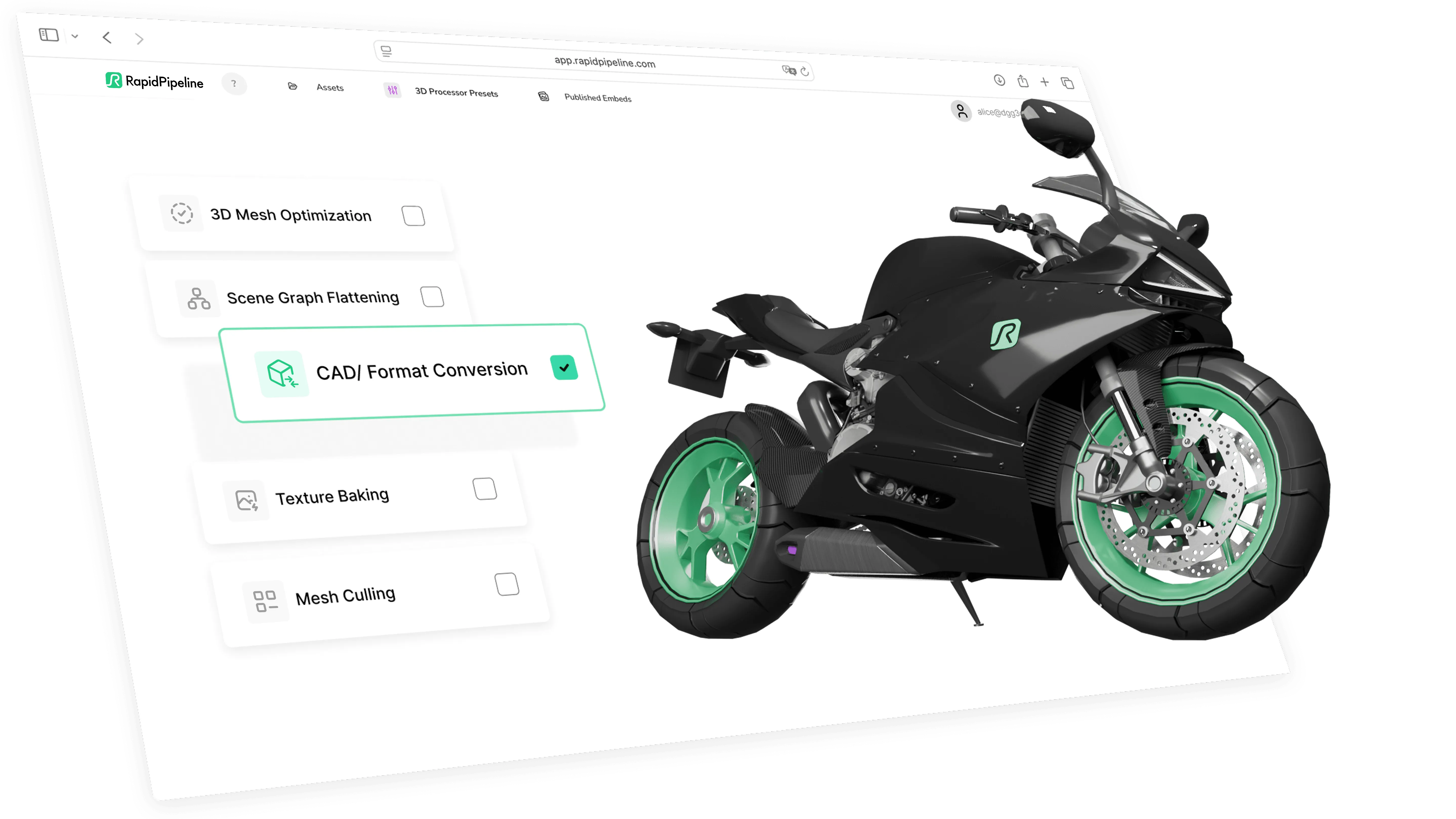
Comparison of Features Supported by SolidWorks and OBJ
| Feature | Supported by SolidWorks | Supported by OBJ |
|---|---|---|
| Morph Targets | No | No |
| Rigid Animations | Yes | No |
| Skinned Animations | No | No |
| Animations | Yes | No |
| Free-Form Surfaces | Yes | No |
| Geometry Compression | No | No |
| Quad Meshes | Yes | Yes |
| Basic 3D Geometry | Yes | Yes |
| PBR Materials | Yes | Partial |
| Transparent Materials | Yes | Yes |
| Vertex Colors | Partial0 | No |
| Materials | Yes | Yes |
| Scene Composition | Yes | No |
| Hierarchical Scene Graph | Yes | No |
| Scene Nodes | Yes | Yes |
| Standardized Format | Partial1 | Partial2 |
| Embedded Textures | Partial3 | No |
| Multiple UV Channels | Partial4 | No |
| Normal Mapping | Partial5 | Partial |
| Procedural Textures | Partial6 | No |
| Texture Compression | No | No |
| Texture Transforms | Yes | No |
| Texturing | Yes | Yes |
Limitations of SolidWorks Files to OBJ Conversion Workflow
The following limitations should be taken into account when converting SolidWorks files to OBJ format:
| SolidWorks Feature (not supported by OBJ) | Limitation Details |
|---|---|
| Free-Form Surfaces | Free-Form Surfaces Support: SolidWorks: Full support | OBJ: No support 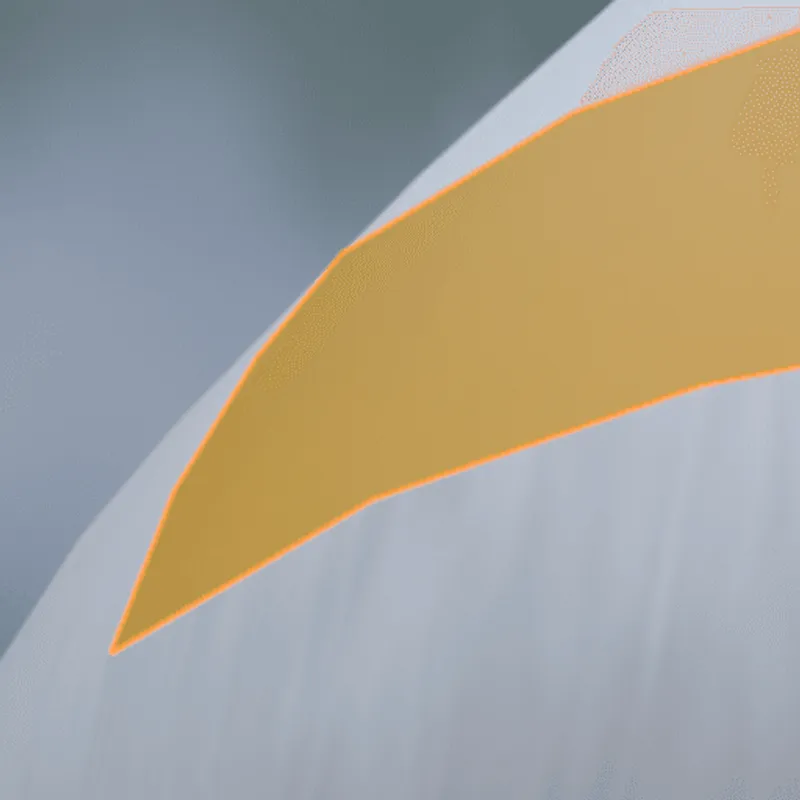 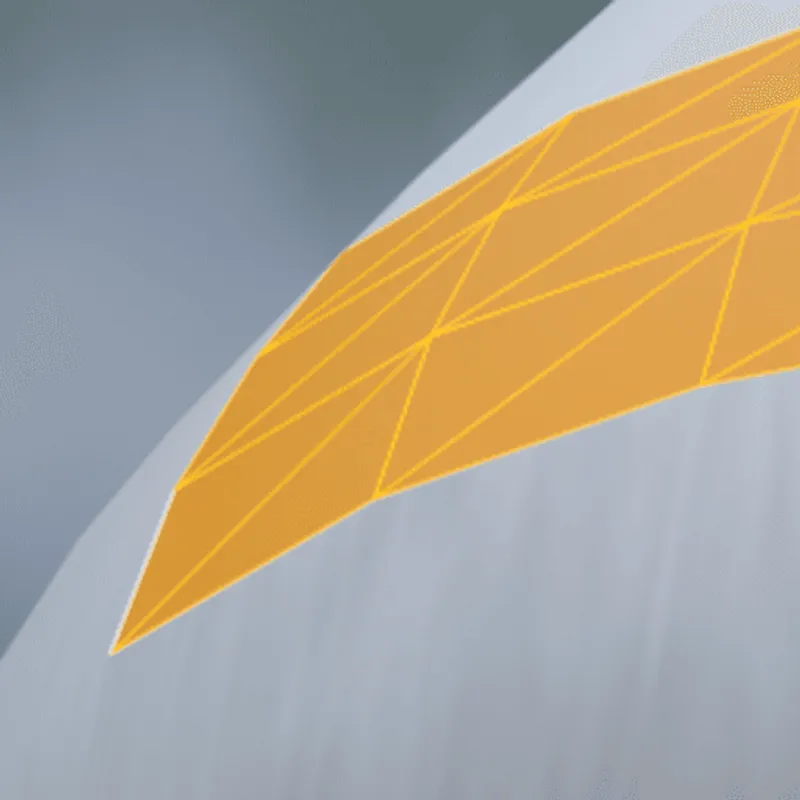 Impact: Free-form surfaces allow a CAD user to design surfaces with advanced controls over curvature and continuitiy. While these surfaces are common for CAD models (in the form of so-called boundary representations or "B-reps"), they need to be converted to polygonal triangle or quad data to work with most 3D rendering engines - a process called tessellation. In this example, a surface patch is used to describe a part of a curved surface of a product. Without support for this feature, the free-form surface has to be tessellated into quads or triangles. |
| Texture Transforms | Texture Transforms Support: SolidWorks: Full support | OBJ: No support 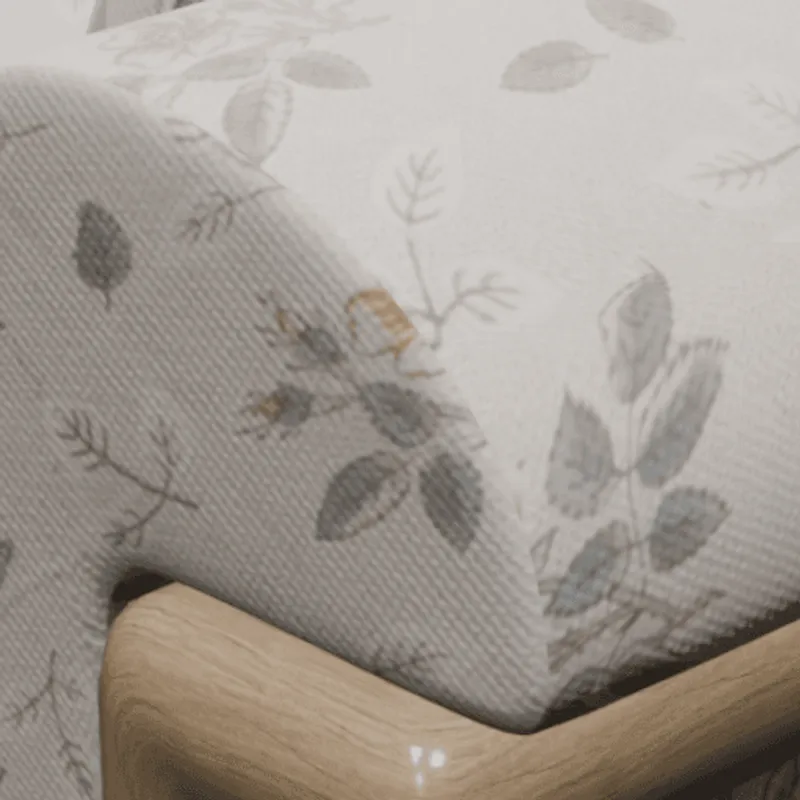 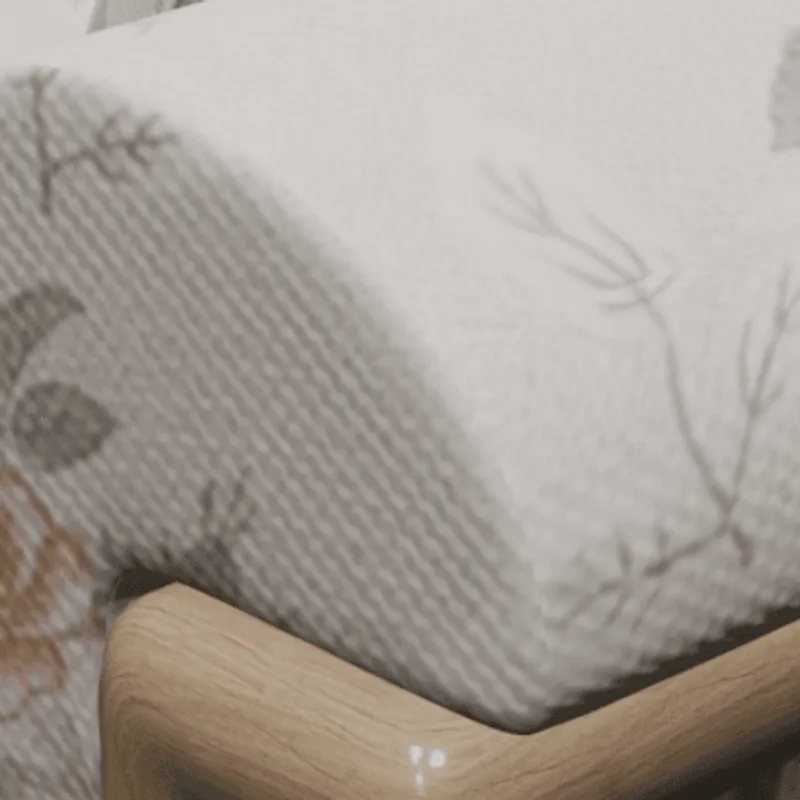 Impact: Texture transforms describe transformation operations that are applied to 2D texture images or UV coordinates when using 2D texture data on a 3D surface. They can be used, for example, to make sure that material patterns are using real-world scale when rendered on the 3D surface. In this example, such a pattern is used and scaled with the help of a texture transform. Without support for this feature, the texture pattern shows up at the wrong scale. |
| Multiple UV Channels | Multiple UV Channels Support: SolidWorks: Partial support | OBJ: No support 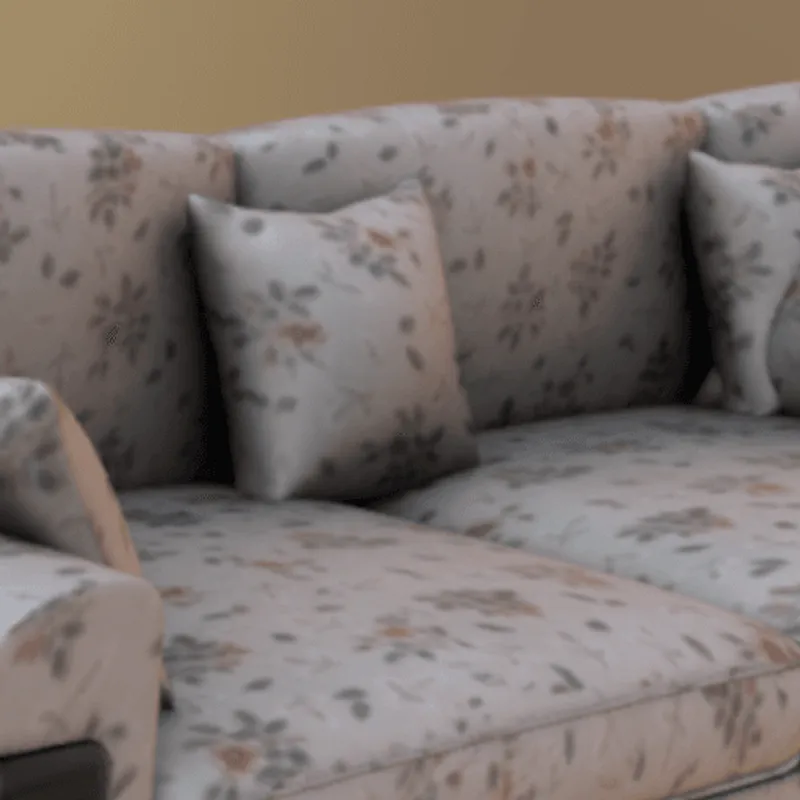 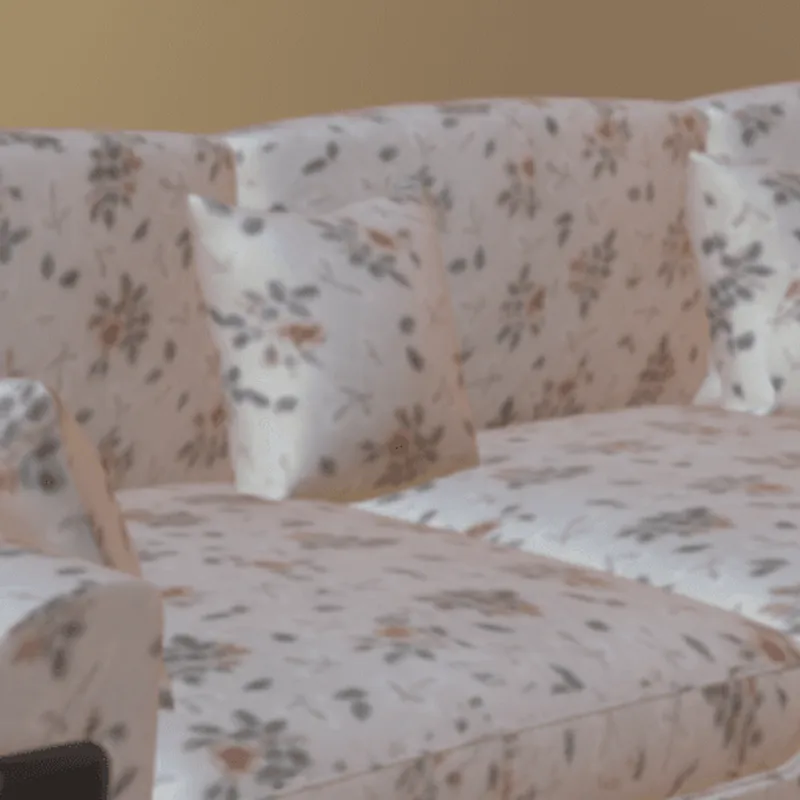 SolidWorks Notes: Limited multi-UV support, primarily through appearances and materials for visualization rather than game development workflows. Impact: Multiple UV channels allow the optimized and sophisticated use of various 3D modeling features at once. For example, one can use one set of UVs and 2D texture data to model a tiling texture or procedural material, and another UV set to leverage a global lightmap or occlusion map of the 3D model. In this example, a combination of tiled texture (UV channel 1) and baked ambient occlusion map (UV channel 2) is used. Without support for this feature, one needs to either give up the tiling property (e.g., by using a tool like RapidPipline to bake a single texture atlas), or give up the ambient occlusion map, as only one UV channel will be usable. |
| Procedural Textures | Procedural Textures Support: SolidWorks: Partial support | OBJ: No support 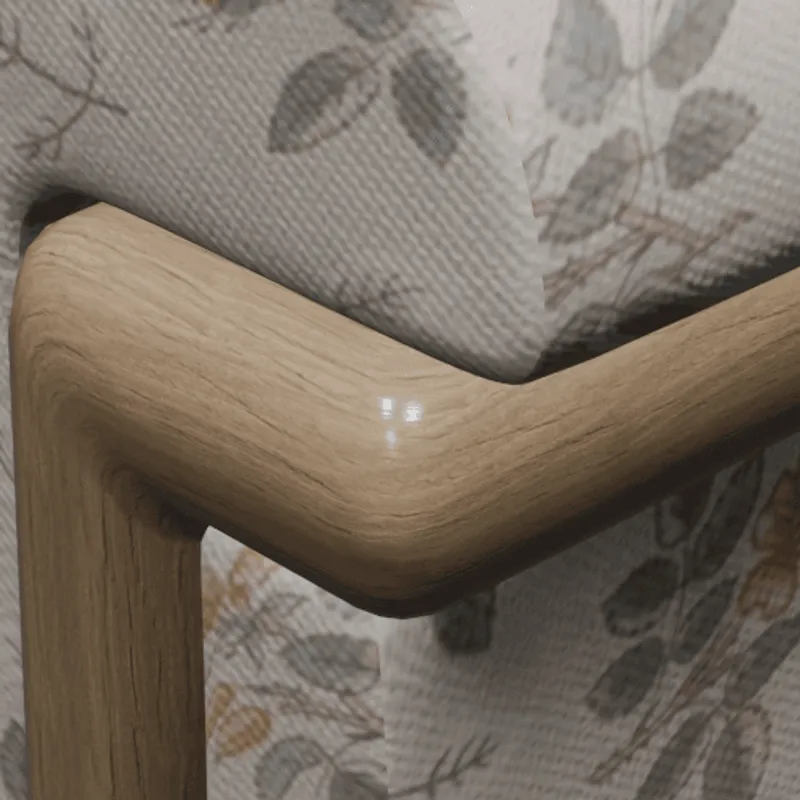 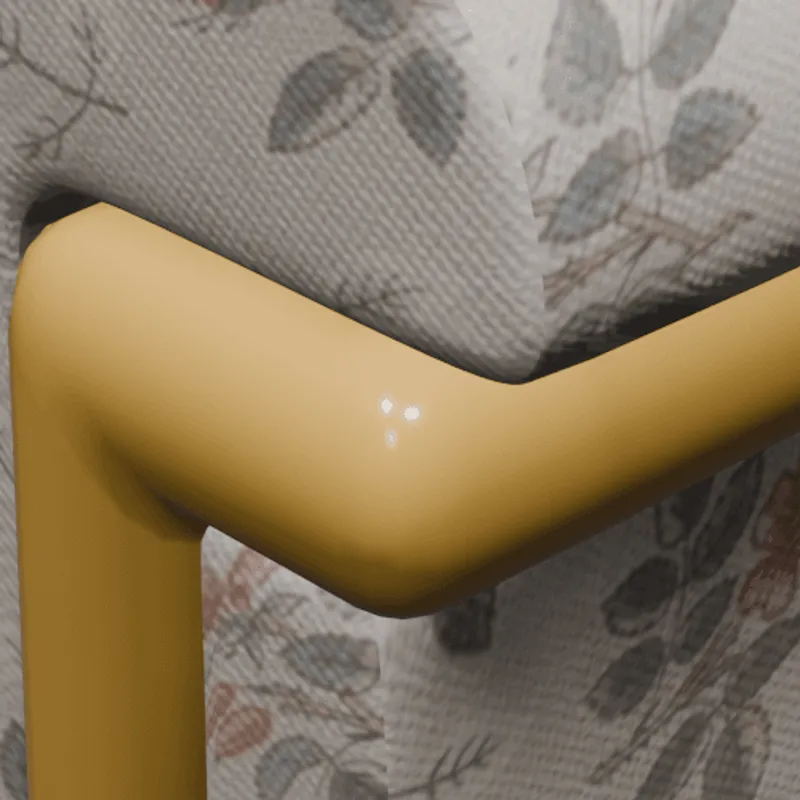 SolidWorks Notes: Limited procedural texture capabilities, mainly through basic material properties and appearance settings. Impact: Procedural texture allow the modeling of surface details through mathematical functions, along with artistic control over various parameters. Typically, they are used for patterns like wood grain or other semi-regular structures. Since they are not using any pixels as source data, procedural textures have, in principle, infinite resolution and are very lightweight to describe. In this example, a procedural texture is used to model the look of a wooden material. Without support for this feature, in this case, the wooden parts won't show any visible details. |
| Embedded Textures | Embedded Textures Support: SolidWorks: Partial support | OBJ: No support   SolidWorks Notes: Textures can be embedded in appearances but with limited format support compared to dedicated 3D graphics formats. Impact: Embedded textures allow the storage and exchange of an entire 3D model and its materials within a single file, by embedding the texture images directly into the 3D file (and not storing them as separate image files). Without support for this feature, textures have to be stored in separate image files, and referenced from the main 3D model file. |
| PBR Materials | PBR Materials Support: SolidWorks: Full support | OBJ: Partial support   Impact: PBR materials enable Physically-Based-Rendering (PBR) for a standardized, photorealistic look of rendered images. PBR uses concepts like metallic-roughness or specular-glossiness properties and a microfacet-based modeling of the surface, using a concept called BRDF (Bi-Directional Reflectance Distribution Function). In this example, PBR materials are used to achieve realistic looking plastic and metal materials. Without support for PBR materials, only basic colors and shading can be used (for example, based on more simple shading models, such as the Blinn/Phong model). |
| Vertex Colors | Vertex Colors Support: SolidWorks: Partial support | OBJ: No support 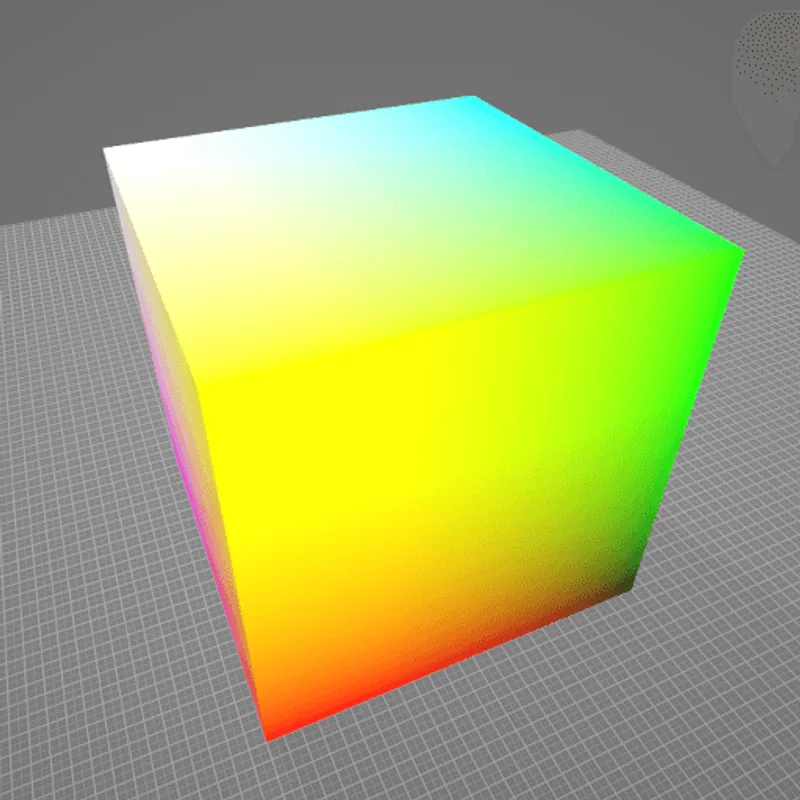 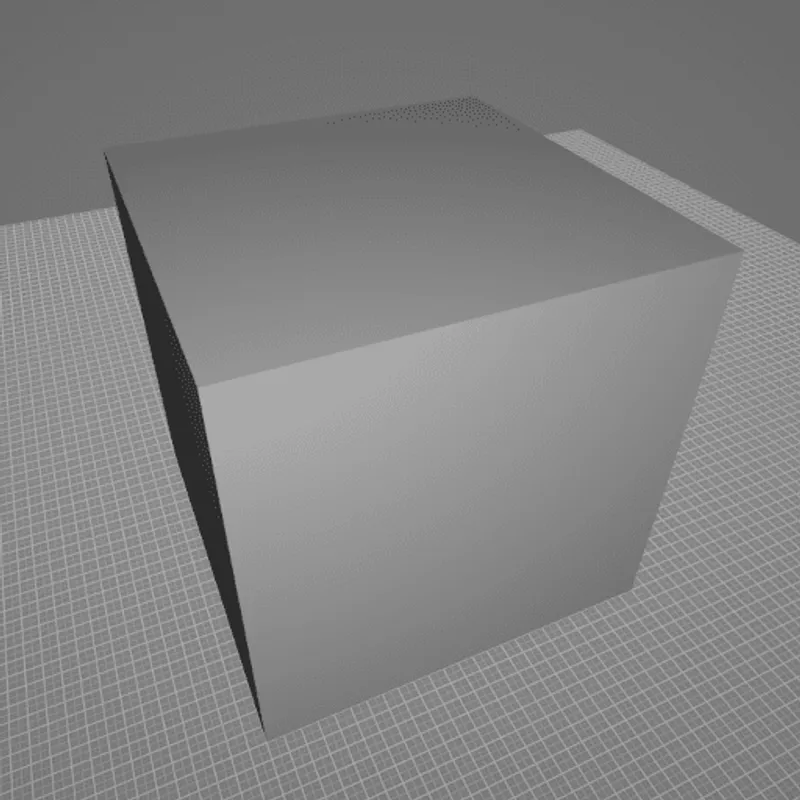 SolidWorks Notes: Limited vertex color support, mainly through part coloring and appearance assignments rather than per-vertex color data. Impact: Vertex colors allow the attachment of colors to each vertex of a 3D model. This can be useful in scenarios such as scientific visualization, or when converting/meshing data from a colored 3D point cloud, for example. On the polygonal surface connecting the vertices, the respective vertex colors are usually smoothly interpolated. In this example, different colors are attached to the different corners of a cube. Without support for this feature, the cube won't have any colors. |
| Animations | Animations Support: SolidWorks: Full support | OBJ: No support 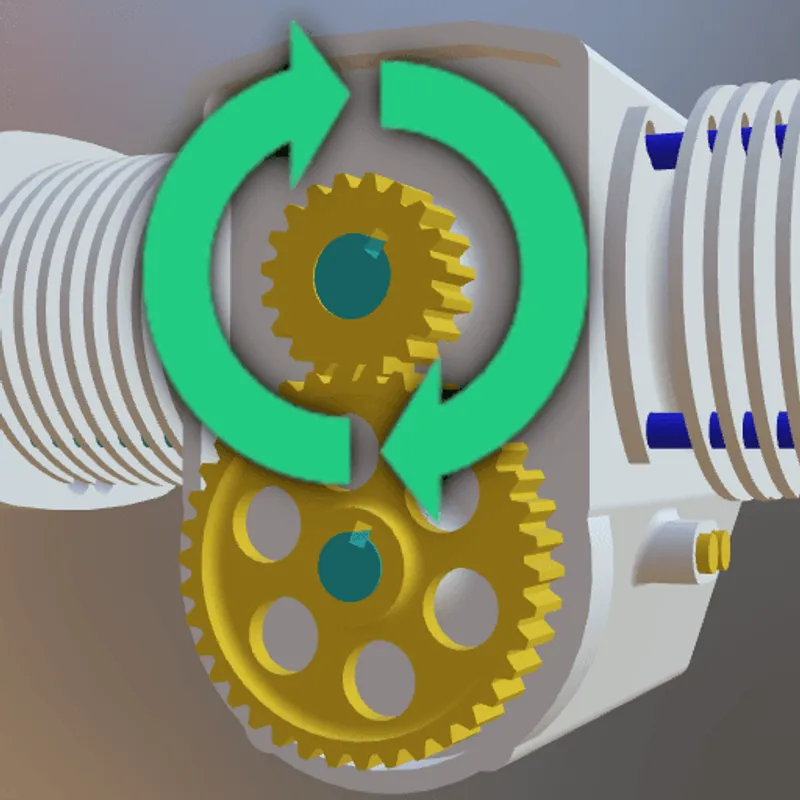 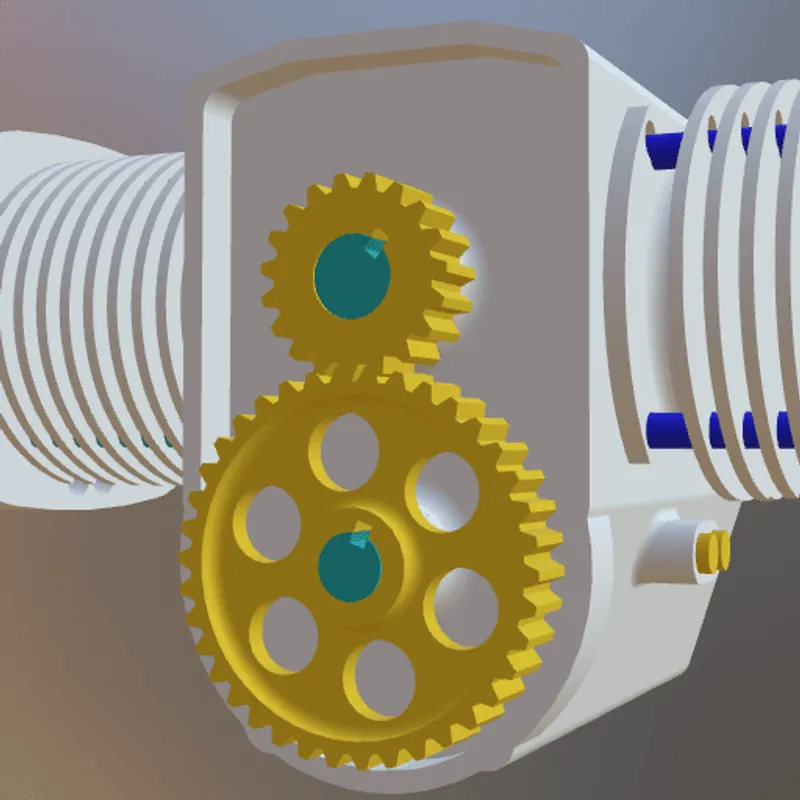 Impact: Animations are an important part of many interactive 3D assets, for example in real-time rendering (including games, XR training, assembly instructions, product demos, and other use cases). There are various kinds of animations that can be used on 3D models. In this example model, a rigid animation is used to make the gears spin. Without support for this feature, in this example, the gears won't move. |
| Rigid Animations | Rigid Animations Support: SolidWorks: Full support | OBJ: No support 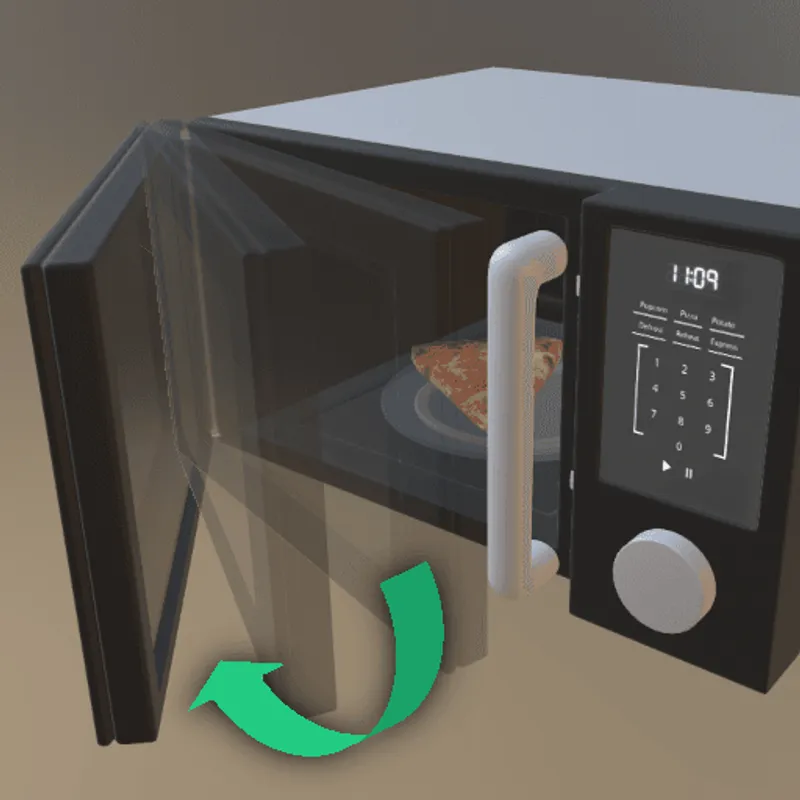 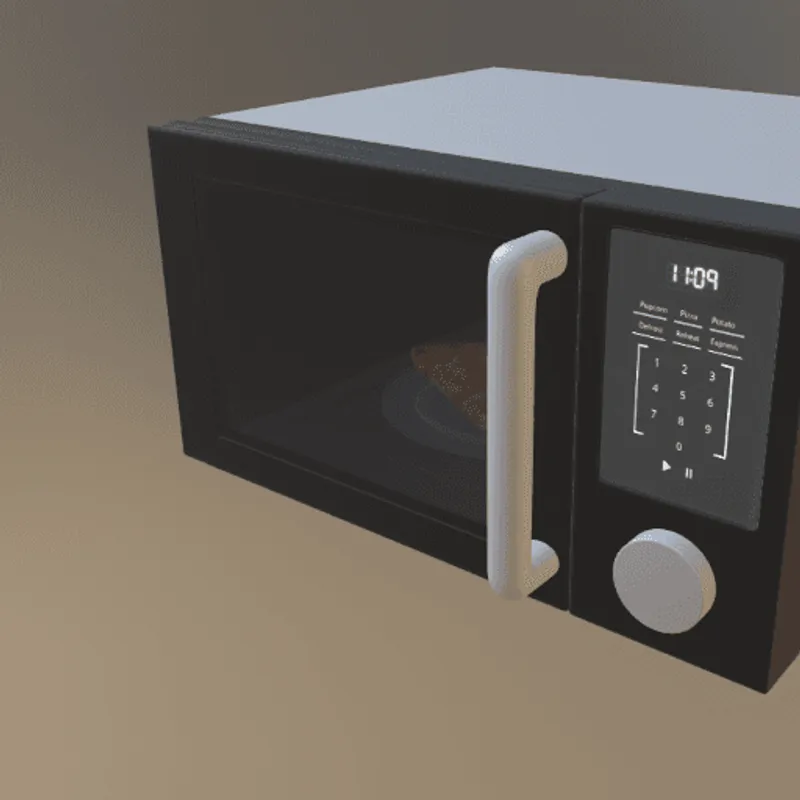 Impact: Rigid Animations are typically used to animate mechanical parts. In this example, the door of this 3D model of a microwave can be interactively opened or closed, using a rigid animation that gradually changes the 3D transformation of the door. Without support for this feature, in this example, the door will just stay in place and won't move. |
| Hierarchical Scene Graph | Hierarchical Scene Graph Support: SolidWorks: Full support | OBJ: No support   Impact: Scene graphs are one of the most common concepts in 3D computer graphics. By structuring the scene in a hierarchical way, logical parts of it can be easily addressed and transformed. This is useful in many applications, like games or 3D configurators. Without support for this feature, a 3D scene cannot be structured hierarchically, for example objects cannot be logically composed of smaller objects. |
| Scene Composition | Scene Composition Support: SolidWorks: Full support | OBJ: No support   Impact: Scene Composition describes the process of composing a scene through links from a main scene that pull in various other scenes/3D models. This can also happen in a nested fashion (through multiple levels of linkage). With a target format not supporting this feature, references to external models must be resolved and the content be baked into one 3D model, which is then saved in that target format. |
What's the best way to get SolidWorks files into my 3D applications, and are there alternatives to using OBJ?
Doing 3D conversion right, especially at scale, can be tricky, as 3D data is in general a rather complex (yet very powerful!) medium. This also applies to SolidWorks and OBJ files - the conversion guide above provides a rough first idea about that. Once you know what you would like to do, tools like RapidPipeline can help you perform the necessary steps, and to even automate the process for thousands or even millions of files.
Especially when introducing pipelines and workflows at scale in an enterprise context, it is usually good to rely on dedicated tools and expertise, making sure you do not introduce any steps into your 3D workflow that are detrimental to the final output's quality, or that take your team too much time (and money).
If you're interested to hire dedicated expertise from the best in the field to help your company reach your goals fast and reliably, please do not hestitate to contact DGG. Being the creators of RapidPipeline, and ambassadors for open 3D standards for more than a decade, we have been building some of the world's most advanced 3D pipelines, having processed many millions of 3D assets.
Therefore, our expertise will help you to reach your goals faster, at scale, and with the least possible friction, since we are focused on maximum interoperability.
To get started with 3D data conversion and optimization today, sign up for a free account!
If you have any questions, feel free to chat with our human team.
Meet the Author

3D Knowledge Team
3D Technical Artists
RapidPipeline lets you convert, optimize and prepare your 3D models, easily. Try it today, or meet our human 3D experts. The Best-in-Class Tools for Your 3D Processing Jobs